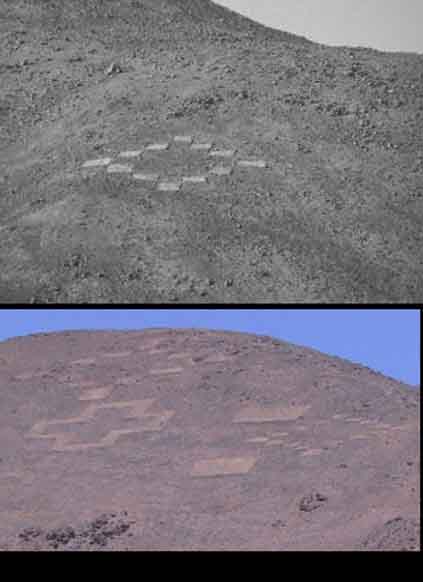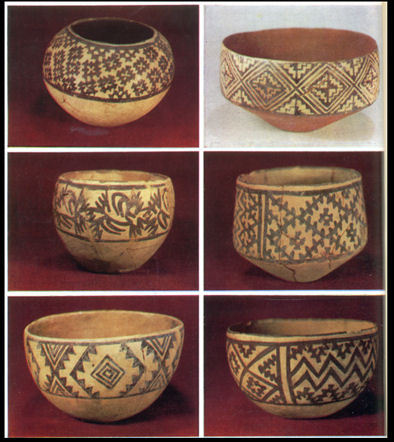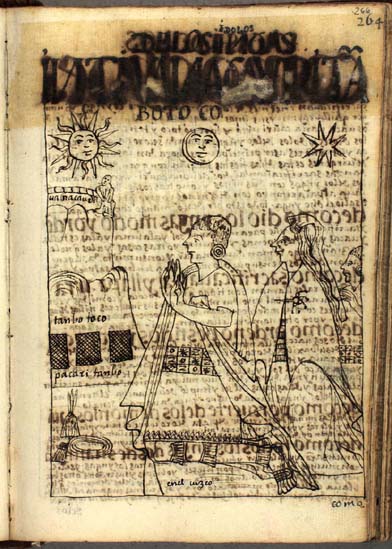It looks like you're using an Ad Blocker.
Please white-list or disable AboveTopSecret.com in your ad-blocking tool.
Thank you.
Some features of ATS will be disabled while you continue to use an ad-blocker.
share:
Atacama Geoglyphs
Why was the configuration of the second pattern created as a geoglyph in the Atacama desert i'm wondering, is it simply because it looked nice there...?

It's a real mystery how this iconography made such a comeback in the Andean regions circa 1500 years ago
Why was the configuration of the second pattern created as a geoglyph in the Atacama desert i'm wondering, is it simply because it looked nice there...?

It's a real mystery how this iconography made such a comeback in the Andean regions circa 1500 years ago
edit on 26-3-2012 by Kantzveldt because: format
There are a limited number of patterns you can use, some symbols, designs and cultural traits will repeat in human cultures
Interesting stuff in the desert and of course CH, you might want to consider the age of those drawing such things
Interesting stuff in the desert and of course CH, you might want to consider the age of those drawing such things
edit on 26/3/12 by Hanslune
because: (no reason given)
reply to post by Hanslune
Sure, my background is in art history, which is why though i'm able to differentiate between minor random variations of pattern according to individuals tastes and those which are central to the overall cultures iconography and ideology.
The D'jade patterns it can't be overstated how influential they were throughout the Neolithic period, even into regions expanded into by cultural transmission from the core Neollithic region, such as South East Asia, here are some fine examples of South West Asian Neolithic ceramics (which D'jade of course predates the usage of)

So the patterns seen can be traced back as far as D'jade, variations on theme. It's important then to try and recognize the original core region and period for diffuse patterns, and what the original cultural context of these might have been.
It's intriguing for me then that i see in the Andean region circa 1500 years ago the development of a culture with the same central motif that can be found at the commencement of the Neolithic period in South West Asia, despite huge differnaces in time and place.
I think it should be recognized that such similar developments did occur, before looking at how and why, and that attempting to dismiss the similarities without first recognizing their particular correspondances won't be helpful,
Sure, my background is in art history, which is why though i'm able to differentiate between minor random variations of pattern according to individuals tastes and those which are central to the overall cultures iconography and ideology.
The D'jade patterns it can't be overstated how influential they were throughout the Neolithic period, even into regions expanded into by cultural transmission from the core Neollithic region, such as South East Asia, here are some fine examples of South West Asian Neolithic ceramics (which D'jade of course predates the usage of)

So the patterns seen can be traced back as far as D'jade, variations on theme. It's important then to try and recognize the original core region and period for diffuse patterns, and what the original cultural context of these might have been.
It's intriguing for me then that i see in the Andean region circa 1500 years ago the development of a culture with the same central motif that can be found at the commencement of the Neolithic period in South West Asia, despite huge differnaces in time and place.
I think it should be recognized that such similar developments did occur, before looking at how and why, and that attempting to dismiss the similarities without first recognizing their particular correspondances won't be helpful,
So your view is that the pattern was created at Djade (or vicinity of, within the time frame of) and expanded from there? Instead of independent
development in a number of places?
reply to post by Hanslune
It's possible, influence from the core Neolithic can be seen in Siberia at a surprisingly early period around 9,000 years ago, and from there into the Americas where the trail is void until the first hints at Chakana symbolism around 5,000 years ago, seems very unlikely though.
Even when the Core Neolithic influence was arriving in Egypt around 6,000 years ago it was barely recognisable and in competition with other regional styles, same at places such as Britain were you might recognise a few scribblings here and there.
All one could say is that if any trace did reach the Andean region, then it was entirely re-constituted around 1500 years ago, thus revivialism.
By the way if you;re doing a series on the sites of the region this is a great resource if you're not already aware of it.
Exoriente
It's possible, influence from the core Neolithic can be seen in Siberia at a surprisingly early period around 9,000 years ago, and from there into the Americas where the trail is void until the first hints at Chakana symbolism around 5,000 years ago, seems very unlikely though.
Even when the Core Neolithic influence was arriving in Egypt around 6,000 years ago it was barely recognisable and in competition with other regional styles, same at places such as Britain were you might recognise a few scribblings here and there.
All one could say is that if any trace did reach the Andean region, then it was entirely re-constituted around 1500 years ago, thus revivialism.
By the way if you;re doing a series on the sites of the region this is a great resource if you're not already aware of it.
Exoriente
edit on 27-3-2012 by Kantzveldt because: Add link
reply to post by Kantzveldt
Yes I'm doing a series on the sites that are near Gobelki Tepe geographically and time frame
Yes I'm doing a series on the sites that are near Gobelki Tepe geographically and time frame
Always worth having a look through the threads here.Nice find Hans,hows the research going?
2nd line to add snakes,sauerkraut and pie.
2nd line to add snakes,sauerkraut and pie.
edit on 28-3-2012 by Cygnus_Hunter because: (no reason given)
reply to post by Kantzveldt
Diffusion of culture is proven in some areas, but "kulturkreiss" is also evident -- civilizations independently creating the same thing when materials/situations are favorable. The presence of circles in art (or lines) isn't indicative of diffusion -- though the similarity of more complex things (oriental dragons, the Athabascan language speakers' beliefs, etc) is. I don't think these patterns were developed from this one area.
Though the art is certainly odd!
Diffusion of culture is proven in some areas, but "kulturkreiss" is also evident -- civilizations independently creating the same thing when materials/situations are favorable. The presence of circles in art (or lines) isn't indicative of diffusion -- though the similarity of more complex things (oriental dragons, the Athabascan language speakers' beliefs, etc) is. I don't think these patterns were developed from this one area.
Though the art is certainly odd!
reply to post by Byrd
What those patterns represented in the Andean region is more than a little odd, the Chakana is understood to represent the interception of the Celestial/Terrestial/Underworld realms, or Cuzco heart of the Inca Empire. It is almost certain that the patterns seen upon the Atacama desert hillsides, identical in structuring to the second D'jade pattern, were placed there to facilitate entrance of the Gods from these realms if they so wished.
There is the legend of the origins of the ruling Inca;
History of the Inca
As recorded by the Spanish, with illustration,

The pinicle of artistic manifestation of this cult in the Andes would appear to be Puma Punku with its many carved variations of these geometric pattern and obsession with portals, the geomtric concerns driving the need for perfection in construction and idiosyncratic design elements, with the Puma the icon of the terrestial plane.
There are also some highly complex and figurative elements like you mentioned, that i want to bring to attention, regarding Neoltihic/Andean comparisons, though with symbolism this is always open to differing interpretations.
What those patterns represented in the Andean region is more than a little odd, the Chakana is understood to represent the interception of the Celestial/Terrestial/Underworld realms, or Cuzco heart of the Inca Empire. It is almost certain that the patterns seen upon the Atacama desert hillsides, identical in structuring to the second D'jade pattern, were placed there to facilitate entrance of the Gods from these realms if they so wished.
There is the legend of the origins of the ruling Inca;
THE FABLE OF THE ORIGIN OF THE INCAS OF CUZCO.
All the native Indians of this land relate and affirm that the Incas Ccapac originated in this way. Six leagues S.S.W. of Cuzco by the road which the Incas made, there is a place called Paccari-tampu, which means "the house of production[40]" at which there is a hill called Tampu-tocco, meaning "the house of windows." It is certain that in this hill there are three windows, one called "Maras-tocco," the other "Sutic-tocco," while that which is in the middle, between these two, was known as "Ccapac-tocco," which means "the rich window," because they say that it was ornamented with gold and other treasures. From the window called "Maras-tocco" came forth, without parentage, a tribe of Indians called Maras. There are still some of them in Cuzco. From the "Sutic-tocco" came Indians called Tampus, who settled round the same hill, and there are also men of this lineage still in Cuzco. From the chief window of "Ccapac-tocco," came four men and four women, called brethren. These knew no father nor mother, beyond the story they told that they were created and came out of the said window by order of Ticci Viracocha, and they declared that Viracocha created them to be lords. For this reason they took the name of Inca, which is the same as lord. They took "Ccapac" as an additional name because they came out of the window "Ccapac-tocco," which means "rich,"
History of the Inca
As recorded by the Spanish, with illustration,

The pinicle of artistic manifestation of this cult in the Andes would appear to be Puma Punku with its many carved variations of these geometric pattern and obsession with portals, the geomtric concerns driving the need for perfection in construction and idiosyncratic design elements, with the Puma the icon of the terrestial plane.
There are also some highly complex and figurative elements like you mentioned, that i want to bring to attention, regarding Neoltihic/Andean comparisons, though with symbolism this is always open to differing interpretations.
edit on 28-3-2012 by Kantzveldt because: typo
new topics
-
It’s Falling…
Philosophy and Metaphysics: 48 minutes ago -
Steering the Titantic from the Drydock.
Rant: 3 hours ago
top topics
-
House Passes Laken Riley Act
Mainstream News: 15 hours ago, 24 flags -
Hearing more ambulances lately
Medical Issues & Conspiracies: 14 hours ago, 8 flags -
Los Angeles brush fires latest: 2 blazes threaten structures, prompt evacuations
Mainstream News: 14 hours ago, 7 flags -
Steering the Titantic from the Drydock.
Rant: 3 hours ago, 7 flags -
Paramilitary Leaks - John Williams
Whistle Blowers and Leaked Documents: 13 hours ago, 6 flags -
The more I think about it
General Chit Chat: 16 hours ago, 4 flags -
Some sausage, some chicken, some sauce, some onions and some garlic...and some peppers!
Food and Cooking: 14 hours ago, 3 flags -
It’s Falling…
Philosophy and Metaphysics: 48 minutes ago, 1 flags
active topics
-
Steering the Titantic from the Drydock.
Rant • 12 • : angelchemuel -
Post A Funny (T&C Friendly) Pic Part IV: The LOL awakens!
General Chit Chat • 8001 • : baddmove -
The more I think about it
General Chit Chat • 6 • : chiefsmom -
ILLUMINATION: Dimensions / Degrees – Da Vincis Last Supper And The Philosophers Stone
Secret Societies • 22 • : CarlLaFong -
Remember These Attacks When President Trump 2.0 Retribution-Justice Commences.
2024 Elections • 139 • : Oldcarpy2 -
Canada as a state .. how would it work?
General Chit Chat • 19 • : Freeborn -
It’s Falling…
Philosophy and Metaphysics • 0 • : JJproductions -
Let's Buy Greenland
General Chit Chat • 18 • : CriticalStinker -
Meta Llama local AI system is scary good
Science & Technology • 50 • : ArMaP -
Gravitic Propulsion--What IF the US and China Really Have it?
General Conspiracies • 35 • : bastion
